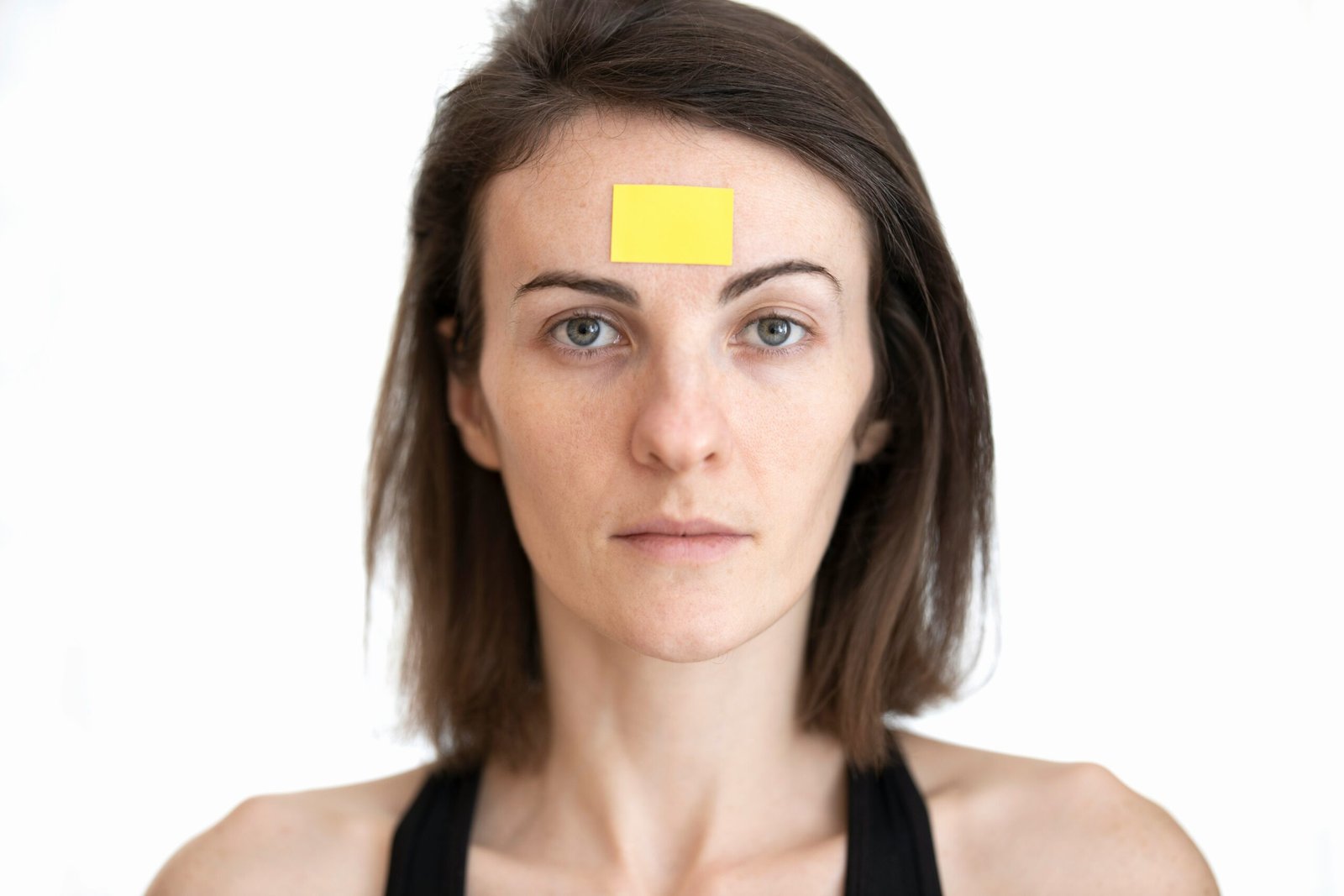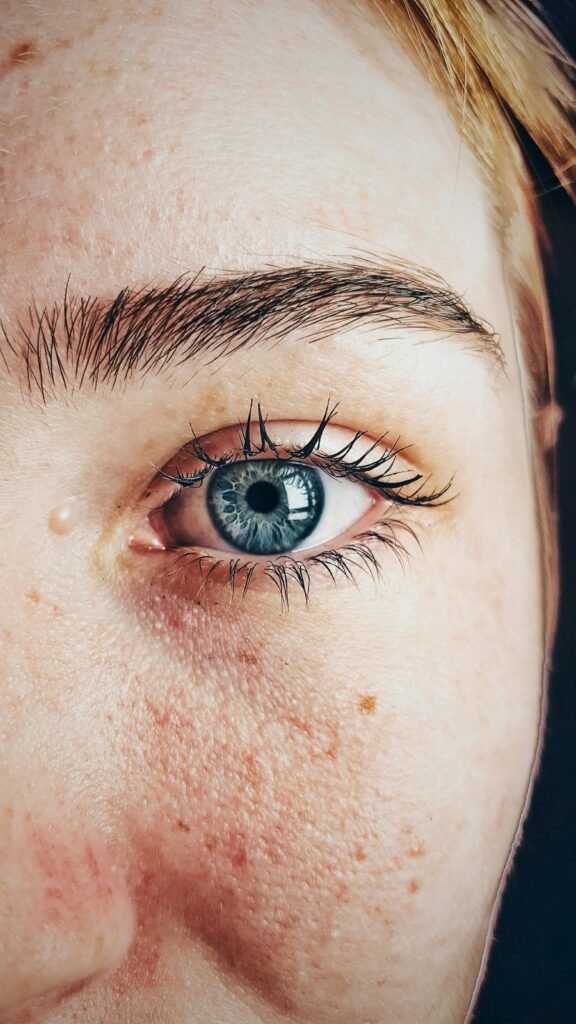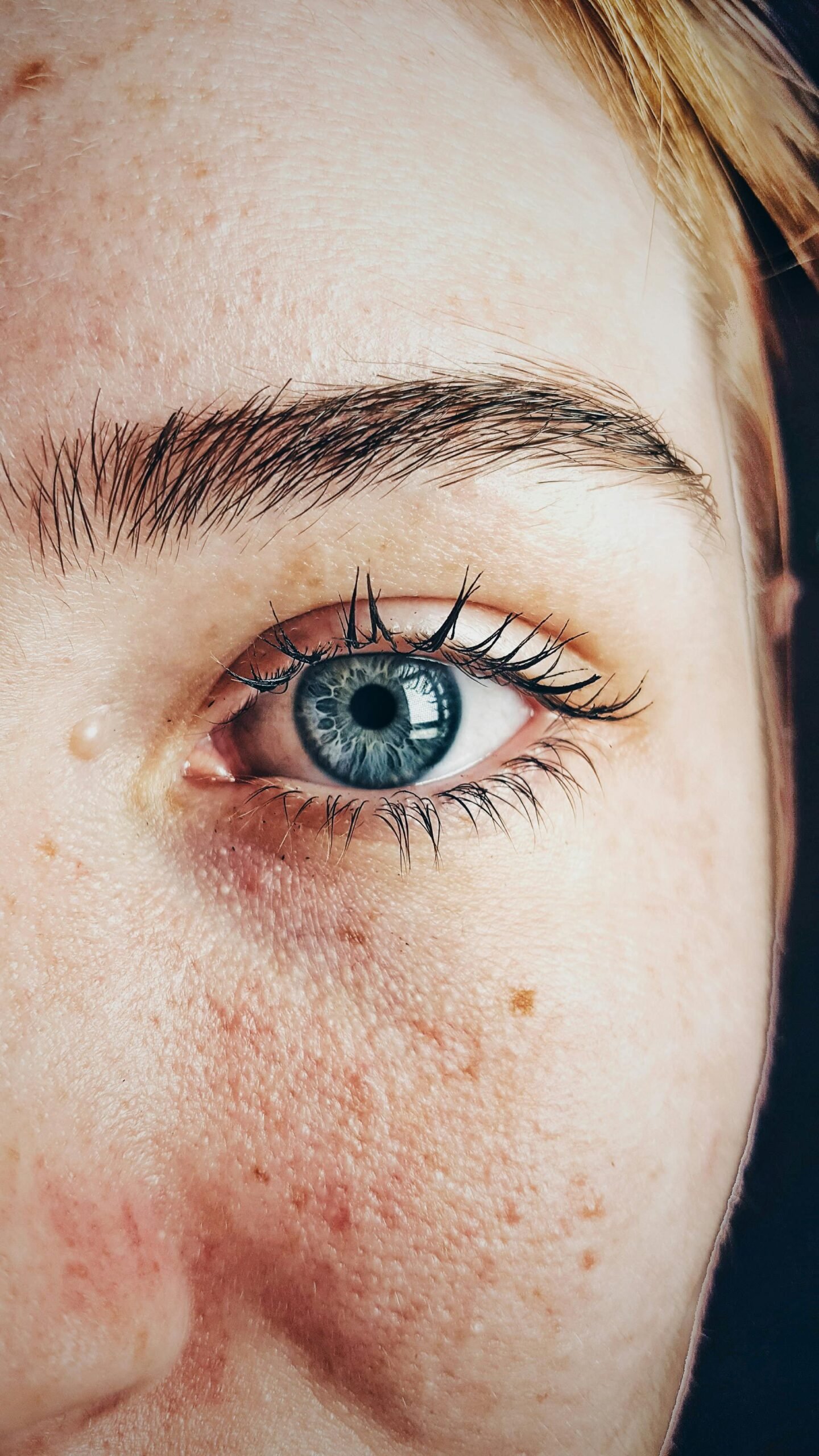
Understanding Skin Tags
Skin tags, medically known as acrochordons, are small, benign growths that often appear on various parts of the body. Characterized as soft, flesh-colored or slightly pigmented protrusions, skin tags usually range in size from a few millimeters to over a centimeter. While they are generally harmless and not associated with any serious medical conditions, their presence can often cause cosmetic concerns or discomfort, particularly if they are located in friction-prone areas.
The formation of skin tags is most frequently linked to skin friction, as they typically develop in areas where skin rubs against skin, clothing, or other surfaces. Common locations for skin tags include the neck, armpits, eyelids, under the breasts, and the groin area. Despite their benign nature, the precise causes of skin tag formation are not fully understood; however, several factors may contribute to their development.
Demographic studies indicate that skin tags are particularly common among middle-aged adults, with prevalence increasing with age. Obesity is also considered a significant risk factor, as added weight may enhance skin friction and the likelihood of tag formation. Additionally, individuals with certain medical conditions, such as diabetes or hormonal imbalances, might find themselves more susceptible to developing skin tags. Genetic predisposition may play a role as well, as skin tags often run in families.
While many people choose to leave skin tags untreated, some may opt for removal methods to improve appearance or alleviate discomfort. Understanding the benign nature of skin tags can help individuals approach their treatment options with a level of informed perspective. It is always advisable to consult with a healthcare professional for advice tailored to individual circumstances related to skin tags and their management.
The Importance of Daily Rituals for Skin Health
Establishing a consistent skincare routine is crucial for maintaining overall skin health, especially for individuals dealing with skin tags. These benign growths can be an aesthetic concern, and an effective daily ritual can significantly contribute to their management and prevention. Engaging in a structured skincare practice not only aids in removing or minimizing skin tags but also helps cultivate healthier skin over time. Regularly cleansing, moisturizing, and protecting the skin can greatly enhance its resilience against various issues.
Moreover, daily skin care rituals can help in preventing skin tags and other skin irregularities. For example, maintaining hydration through adequate moisturization can balance the skin’s moisture levels, potentially reducing the conditions that lead to skin tag formation. Additionally, utilizing products that contain natural exfoliants can promote cell turnover, helping to reveal the fresher and healthier skin beneath. By conscientiously incorporating these practices into one’s daily routine, individuals may notice a significant improvement in their skin’s texture and appearance, which can help minimize skin tags and other concerns.
Beyond the physical advantages, daily rituals for skin care also serve an important psychological function. Engaging in a personal care routine fosters a sense of responsibility and self-worth. This act of prioritizing oneself encourages mindfulness and can be an effective stress reliever. Taking a moment each day to care for the skin can help individuals connect with their well-being, fostering a positive self-image and promoting mental health. Overall, the importance of daily rituals extends beyond mere aesthetics; they contribute to both physical and emotional well-being, enhancing one’s quality of life.
Introducing the 3-Second Ritual
The 3-second ritual is a straightforward yet effective practice designed to help manage and potentially reduce the appearance of skin tags. This ritual centers around a minimalistic approach that incorporates daily self-care into your routine. The method is not only quick but also requires no elaborate preparation, making it accessible to individuals looking for a simple solution for skin tag concerns.
To begin the ritual, select a reliable skin tag removal product. Many of these products are available over-the-counter and typically contain natural ingredients that are formulated to target skin tags directly. Look for options that feature components known for their skin-soothing properties, as these can enhance the overall benefits of the ritual.
Once you have selected your product, the actual ritual can commence. Apply the chosen solution directly onto the skin tag or the affected area, taking care to ensure that the treatment thoroughly coats the skin tag. The application process should take no longer than three seconds, making it an easy addition to your daily routine. This small but consistent action can contribute to the gradual fading or removal of skin tags over time.
In addition to the topical application, maintaining proper skin hygiene is essential. Ensure to cleanse the area regularly with a gentle soap or cleanser to prevent any additional irritation. Following the daily application and cleansing, you may also want to moisturize the surrounding skin to keep it healthy and hydrated.
Commitment to this daily 3-second ritual not only offers potential benefits in terms of skin tag management but also promotes a sense of self-care and wellness, integrating skincare seamlessly into everyday life.
Ingredients Needed for the Ritual

To effectively perform the 3-second ritual for removing skin tags, it is crucial to gather the right ingredients. Each ingredient plays a vital role in the process and contributes significantly to skin health. Below are the essential components needed for the ritual:
Apple Cider Vinegar – Apple cider vinegar is widely recognized for its natural acidity, which can help break down skin tags over time. It promotes exfoliation and serves as an antimicrobial agent, ensuring that the skin remains healthy while undergoing treatment. This ingredient can commonly be found at grocery stores, health food stores, or online retailers.
Tea Tree Oil – Known for its robust antiseptic properties, tea tree oil is a powerful natural remedy for various skin conditions, including skin tags. It helps in reducing inflammation and promoting healing, making it an ideal addition to your ritual. Qualitative tea tree oil can be sourced from pharmacies or specialized health product shops.
Cotton Balls – Cotton balls are essential for applying the ingredients onto the skin carefully and precisely. They ensure that the treatment is localized, thereby enhancing efficacy while minimizing irritation to surrounding areas. Cotton balls are readily available at supermarkets or beauty supply stores.
Protective Bandage – After applying the solution, a protective bandage is advised to cover the treated area. This step not only aids in protecting the skin but also helps in keeping the solution concentrated on the skin tag for optimal results. Protective bandages can be acquired from pharmacies or online sites selling first aid supplies.
Each of these ingredients is integral to the success of the 3-second ritual. By using high-quality versions of these components, individuals can significantly improve their chances of effectively removing skin tags while promoting overall skin health.
Step-by-Step Guide to Performing the Ritual

To achieve the desired results in removing skin tags, follow this step-by-step guide to perform the 3-second ritual effectively. This process is simple yet requires precision for optimal results. Begin by assembling your materials; you will need a clean cotton ball, a pair of sterilized scissors, and a topical antiseptic. Ensuring all tools are sanitized is crucial to prevent any infections during the procedure.
Start by gently washing the area of the skin tag with mild soap and water. Pat the skin dry using a soft towel, being careful not to irritate the area. It is important to keep the skin free from moisture, as this will facilitate a better grip and ensure accuracy during the application of the remedy.
Next, apply the topical antiseptic to the cotton ball. This step is essential, as it will help cleanse the skin tag and surrounding areas of any bacteria. Once the antiseptic is applied, hold the cotton ball firmly against the skin tag for approximately 3 seconds. This brief exposure allows the antiseptic to penetrate the tissue effectively.
After this time, remove the cotton ball, and with your sterilized scissors, carefully snip the base of the skin tag as close to the skin as possible without cutting the surrounding tissue. This is a critical part of the ritual; take your time to ensure precision, as incorrectly cutting can lead to unnecessary bleeding or scarring. Once the tag has been removed, apply more antiseptic to the area to promote healing.
It is advisable to repeat this ritual once daily until the skin tag is fully removed. Keep an eye on the area for any signs of irritation or infection, and consult with a healthcare professional if you notice anything unusual. By following these steps, you can effectively remove skin tags in a safe and efficient manner.
Expected Results and Timeline
When undertaking a daily 3-second ritual aimed at removing skin tags, it is essential to have realistic expectations regarding both the timeline and the results. Typically, individuals may start noticing changes in their skin tags within a few weeks of consistent practice. However, the exact duration before tangible results manifest can vary significantly based on factors such as skin type, the size of the skin tags, and the overall health of the individual’s skin.
Many users report visible reduction in the size of skin tags after approximately four to six weeks of performing the ritual daily. It is crucial to remain patient, as some individuals may experience slower progress, especially if they have particularly stubborn skin tags or underlying skin conditions. Variation in results should not discourage practitioners, as skin types differ and can impact the effectiveness of the ritual. For example, individuals with oily skin may notice a more rapid response compared to those with dry or sensitive skin.
Furthermore, it is important to maintain realistic expectations regarding the complete removal of skin tags. While the ritual may significantly diminish their appearance, some skin tags may not disappear entirely or may require a longer commitment to achieve the desired results. Regular monitoring and gentle adjustments in the approach can aid in catering the ritual to one’s specific skin condition, enhancing its overall effectiveness.
In conclusion, participants should anticipate a gradual process when utilizing this 3-second ritual for skin tag removal. Understanding the variability in results and timelines will allow individuals to remain committed and optimistic as they work towards smoother skin.
Additional Tips for Skin Tag Management

The management of skin tags extends beyond a singular ritual; it incorporates a holistic approach that includes lifestyle adjustments, dietary considerations, and natural remedies. Engaging in these complementary practices can not only support the daily removal ritual but also promote overall skin health. One significant lifestyle change is ensuring that your skin remains clean and dry, as moisture can contribute to the formation of skin tags. Regular exfoliation can aid in the removal of dead skin cells, which can reduce the likelihood of new skin tags developing.
Dietary choices also play a crucial role in skin tag management. Focusing on a balanced diet rich in vitamins and minerals can improve skin health. Foods high in antioxidants, such as berries, leafy greens, and nuts, can combat oxidative stress and support skin vitality. Additionally, incorporating anti-inflammatory foods like turmeric and ginger may help in reducing skin irritation, potentially decreasing the chances of skin tag growth. Staying hydrated is essential; it not only hydrates the skin but also assists in the detoxification process, further ensuring a healthier skin environment.
Natural remedies can serve as complementary solutions in managing skin tags. Some individuals have found success with tea tree oil, which is known for its antiseptic properties. Applying a diluted form of tea tree oil to skin tags may help in their natural reduction over time. Likewise, apple cider vinegar can be utilized for its purported skin benefits. Dabbing a small amount on a cotton ball and applying it to the skin tag may enhance blood circulation and possibly aid in the gradual fading of the tag.
Incorporating these additional tips into your routine can enhance the overall effectiveness of the daily ritual and provide a comprehensive approach to skin tag management. While the ritual may address existing skin tags, these lifestyle, dietary, and natural remedy strategies can contribute to long-term skin health and prevent future occurrences.
When to Consult a Dermatologist

Skin tags are generally benign growths that do not require treatment unless they cause discomfort or aesthetic concerns. However, there are specific situations where consulting a dermatologist becomes essential. Notably, if you observe sudden changes in the size, shape, or color of a skin tag, this may indicate potential complications that require a professional assessment. Such changes could suggest irritation, infection, or, in rare cases, the possibility of malignancy. A dermatologist can provide a thorough evaluation to determine whether the growth poses any health risks.
Additionally, if skin tags appear in unusual locations or increase in number, it may be a sign of an underlying condition that warrants further investigation. For instance, clusters of skin tags may be related to hormonal changes, obesity, or diabetes. In these cases, seeking advice from a dermatologist can help identify the root cause and offer appropriate treatment options. Dermatologists are trained to differentiate between benign skin tags and other skin lesions that may require different management strategies.
Moreover, individuals who experience discomfort due to skin tags, such as those caught in clothing or jewelry, should consider consulting a dermatologist for removal. Professional removal methods, such as cryotherapy or electrosurgery, are typically more effective and safer than at-home remedies, reducing the risk of infection and scarring. This step is particularly advisable for those with multiple skin tags or those that are particularly large or troublesome.
In summary, while skin tags are commonly harmless, specific signs and symptoms should prompt a visit to a dermatologist. Professional evaluation ensures both peace of mind and appropriate care, enhancing skin health and appearance.
Real-Life Testimonials and Success Stories
Many individuals struggling with skin tags have discovered remarkable success after implementing the 3-second ritual into their daily routines. These testimonies not only provide hope but also illustrate the ritual’s effectiveness in managing skin tags. One individual, Sarah, shared her experience of combating skin tags that had persisted for years. “After trying various treatments without results, I decided to give this simple ritual a try. To my surprise, within weeks, I noticed a significant reduction in the size and visibility of my skin tags,” she noted.
Another successful user, Michael, expressed his gratitude after discovering this daily practice. “I had multiple skin tags on my neck that were both bothersome and embarrassing. Incorporating this 3-second ritual changed everything. Within a month, most of them completely disappeared. It was easy and didn’t require any expensive products or treatments,” he explained. Michael’s journey underscores how a straightforward, consistent approach can yield significant results.
Additionally, testimonials from community forums echo similar sentiments. Users emphasize the convenience of the ritual, stating that it seamlessly fits into their lifestyle. One participant remarked, “I could effortlessly include it in my morning routine. The simplicity is key; it’s just a few seconds, yet it transformed my skin’s appearance.” Beyond the physical transformation, these stories highlight the emotional benefits as well, contributing to greater self-esteem and confidence. The overall positive feedback suggests that many have benefited from adopting this brief yet impactful daily practice.
These real-life experiences serve as an encouragement for those encountering skin tags, illustrating that an effective, simple solution is within reach. The success stories reflect a growing trend towards natural and hassle-free skin tag management, fostering a sense of community among users who share their journeys.




[…] collaborative settings, good mental health is equally important. Team members who are emotionally balanced are more likely to communicate […]
[…] Dermatologists have long been aware of the benefits of occlusives like petroleum jelly. Board-certified dermatologist Dr. Hadley King emphasizes that slugging can be especially helpful for those with dry skin or in dry environments. She explains that the technique locks in moisture and helps the skin retain hydration, making it ideal for winter. […]